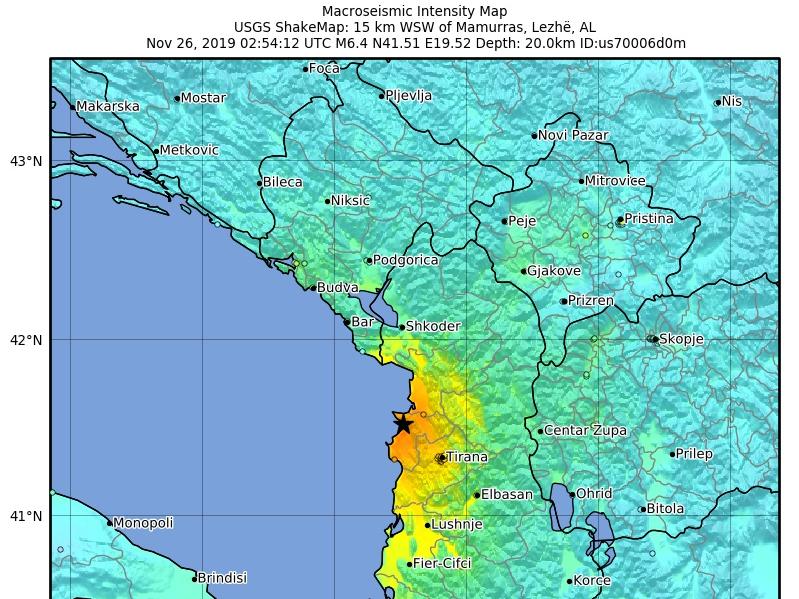
Shakemap from USGS for the November 2019 Albania Earthquake (United States Geological Survey)
Following the November 2019 earthquake in Albania, which killed 51 people, injured more than 900, and left 17,000 people displaced, the UNDRR Regional Office for Europe reached out to the former Sendai Framework Focal point for Albania, Mr. Maksimiljan Dhima, to get his thoughts on recovery, and how Albania can improve disaster resilience.
The results of the post-disaster needs assessment, conducted in Albania last month, show that the total recovery needs are 1,08 million EUR out of which 51%, was assessed as necessary to address short-term needs. How can this disaster be used as an opportunity to build back better and increase infrastructure resilience? What is the lesson we should learn from what happened?
This disaster can certainly be used as an opportunity to build back better as well as to increase infrastructure resilience in Albania. It has already contributed to increasing public awareness and making decision makers aware of the country’s vulnerability and exposure to disasters as well as of the urgency of mainstreaming DRR into the development policies. Learning from past events and the effects of earthquakes upon critical infrastructure and building stocks, there are various measures to be taken that could ensure resilient infrastructure. More concretely:
·Being one of the most earthquake-prone countries in Europe, Albania should frequently update its building codes and seismic hazard map. The codes an the map have not been updated in the past 40 years. This can lead to critical infrastructure system failures.
·Poor land use management and urban planning practices in the country, at both, national and local level have prevented risk informed policies and led to wrong decisions.
·Physical and functional inspections of critical infrastructure were not regularly conducted
·Civil Protection Law (Law - 45/2019) represents a good basis for the implementation of DRR policies in the country. However, other sectoral and crosscutting policies and legislation, institutional arrangements, increased administrative, technical, and financial capacities are also needed in order to ensure a resilient critical infrastructure in the future.
·The lack of budgeting for DRR at all levels was one of the reasons for the obsolescence and depreciation of the existing critical infrastructure. The Law 45/2019 establishes the good practice that line ministries should have a separate budget line for disaster risk reduction and civil protection activities allocating 2-4% of their annual budget, while municipalities should allocate no less than 4%. Nevertheless, DRR budgeting should be properly planned and implemented in all sectors and at all levels of governance in order to ensure DRR mainstreaming into sustainable development policies.
This earthquake increased the poverty rate in the country by 2.3 per cent, affecting 220,000 people or 10 percent of the population. Lack of insurance coverage and the lack of public/private insurance schemes undermine recovery after disasters and sustainable development. What is needed to improve insurance mechanisms for stronger resilience of population to future events?
Strengthening the insurances mechanism is a challenging issue even in more advanced countries. Therefore, the first thing to be done is raising awareness of citizens on the necessity of private insurance.
The disaster insurance market is already one of the strategic priorities for Albania and as such, it is included in the National Strategy for Development and Integration 2015-2020
With the support from the World Bank, the law on “compulsory insurance of dwellings from earthquakes and floods” was drafted in 2016. According to the law, currently under revision, the market penetration of disaster insurance is still very low in Albania (1-2 houses per 100). In addition, Albania, together with other countries from the region participates in the Regional Catastrophe Risk Insurance Facility launched by the World Bank and other partners in 2010.